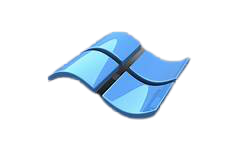Description
Duration: 7 days
This credential demonstrates expertise at designing and implementing Universal Windows Platform apps that offer a compelling user experience, leverage other services and devices, and use best coding practices to enhance maintainability.
Required exams for the certification are:
70-483: Programming C# (M20483)
70-354: Universal Windows Platform – App Architecture and UX/UI (beta)
70-355: Universal Windows Platform – App Data, Services, and Coding Patterns (in development)
This MCSD certification requires that you show continued ability to perform in your chosen solution area by completing a recertification exam every two years.
Prerequisites
C# to complete basic programming tasks. More specifically, students should have hands-on experience using C# that demonstrates their understanding of the following:
How to name, declare, initialize, and assign values to variables within an application.
How to use Arithmetic operators to perform arithmetic calculations involving one or more variables, Relational operators to test the relationship between two variables or expressions, Logical operators to combine expressions that contain relational operators.
How to create the code syntax for simple programming statements using C# language keywords and recognize syntax errors using the Visual Studio IDE.
How to create a simple branching structure using an IF statement.
How to create a simple looping structure using a For statement to iterate through a data array.
How to use the Visual Studio IDE to locate simple logic errors.
How to create a Function that accepts arguments (parameters and returns the value of a specified type.
How to design and build a simple user interface using standard controls from the Visual Studio toolbox.
How to connect to a SQL Server database and the basics of how to retrieve and store data.
How to sort data in a loop.
How to recognize the classes and methods used in a program.
What’s included?
- Authorized Courseware
- Intensive Hands on Skills Development with an Experienced Subject Matter Expert
- Hands-on practice on real Servers and extended lab support 1.800.482.3172
- Examination Vouchers & Onsite Certification Testing- (excluding Adobe and PMP Boot Camps)
- Academy Code of Honor: Test Pass Guarantee
- Optional: Package for Hotel Accommodations, Lunch and Transportation
With several convenient training delivery methods offered, The Academy makes getting the training you need easy. Whether you prefer to learn in a classroom or an online live learning virtual environment, training videos hosted online, and private group classes hosted at your site. We offer expert instruction to individuals, government agencies, non-profits, and corporations. Our live classes, on-sites, and online training videos all feature certified instructors who teach a detailed curriculum and share their expertise and insights with trainees. No matter how you prefer to receive the training, you can count on The Academy for an engaging and effective learning experience.
Methods
- Instructor Led (the best training format we offer)
- Live Online Classroom – Online Instructor Led
- Self-Paced Video
Speak to an Admissions Representative for complete details
| Start | Finish | Public Price | Public Enroll | Private Price | Private Enroll |
|---|---|---|---|---|---|
| 5/12/2025 | 5/16/2025 | ||||
| 6/2/2025 | 6/6/2025 | ||||
| 6/23/2025 | 6/27/2025 | ||||
| 7/14/2025 | 7/18/2025 | ||||
| 8/4/2025 | 8/8/2025 | ||||
| 8/25/2025 | 8/29/2025 | ||||
| 9/15/2025 | 9/19/2025 | ||||
| 10/6/2025 | 10/10/2025 | ||||
| 10/27/2025 | 10/31/2025 | ||||
| 11/17/2025 | 11/21/2025 | ||||
| 12/8/2025 | 12/12/2025 | ||||
| 12/29/2025 | 1/2/2026 |
Curriculum
Module 1: Creating a Class Hierarchy by Using Inheritance
This module explains how to use inheritance to create a class hierarchy and extend a .NET Framework class. This module also describes how to create generic classes and define extension methods.
Lessons
Creating Class Hierarchies
Extending .NET Framework Classes
Creating Generic Types
Lab: Refactoring Common Functionality into the User Class
Creating and Inheriting from the User Base Class
Implementing Password Complexity by Using an Abstract Method
Creating the ClassFullException Class
After completing this module, students will be able to:
Define abstract classes and inherit from base classes to create a class hierarchy.
Inherit from .NET Framework classes and use extension methods to add custom functionality to the inherited class.
Create generic classes and methods.
Module 2: Reading and Writing Local Data
This module explains how to read and write data by using file input/output (I/O) and streams, and how to serialize and deserialize data in different formats.
Lessons
Reading and Writing Files
Serializing and Deserializing Data
Performing I/O Using Streams
Lab: Generating the Grades Report
Serializing the Data for the Grades Report as XML
Previewing the Grades Report
Persisting the Serialized Grades Data to a File
After completing this module, students will be able to:
Read and write data to and from the file system by using file I/O.
Convert data into a format that can be written to or read from a file or other data source.
Use streams to send and receive data to or from a file or other data source.
Module 3: Accessing a Database
This module explains how to create and use an entity data model for accessing a database, and how to use LINQ to query and update data.
Lessons
Creating and Using Entity Data Models
Querying Data by Using LINQ
Updating Data by Using LINQ
Lab: Retrieving and Modifying Grade Data
Creating an Entity Model from The School of Fine Arts Database
Updating Student and Grade Data Using the Entity Framework
Extending the Entity Model to Validate Data
After completing this module, students will be able to:
Create an entity data model, describe the key classes contained in the model, and customize the generated code.
Use LINQ to query and work with data.
Use LINQ to insert, update, and delete data.
Module 4: Review of C# Syntax
This module reviews the core syntax and features of the C# programming language. It also provides an introduction to the Visual Studio 2012 debugger.
Lessons
Overview of Writing Applications using C#
Datatypes, Operators, and Expressions
C# Programming Language Constructs
Lab: Developing the Class Enrollment Application
Implementing Edit Functionality for the Students List
Implementing Insert Functionality for the Students List
Implementing Delete Functionality for the Students List
Displaying the Student Age
After completing this module, students will be able to:
Describe the architecture of .NET Framework applications and use the features that Visual Studio 2012 and C# provide to support .NET Framework development.
Use the basic data types, operators, and expressions provided by C#.
Use standard C# programming constructs.
Module 5: Creating Methods, Handling Exceptions, and Monitoring Applications
This module explains how to create and call methods, catch and handle exceptions. This module also describes the monitoring requirements of large-scale applications.
Lessons
Creating and Invoking Methods
Creating Overloaded Methods and Using Optional and Output Parameters
Handling Exceptions
Monitoring Applications
Lab: Extending the Class Enrollment Application Functionality
Refactoring the Enrollment Code
Validating Student Information
Saving Changes to the Class List
After completing this module, students will be able to:
Create and invoke methods, pass parameters to methods, and return values from methods.
Create overloaded methods, and use optional parameters and output parameters.
Catch and handle exceptions and write information to the event log.
Explain the requirement for implementing logging, tracing, and profiling when building large-scale applications.
Module 6: Developing the Code for a Graphical Application
This module describes how to implement the basic structure and essential elements of a typical desktop application, including using structures and enumerations, collections, and events.
Lessons
Implementing Structs and Enums
Organizing Data into Collections
Handling Events
Lab: Writing the Code for the Grades Prototype Application
Adding Navigation Logic to the Application
Creating Data Types to Store User and Grade Information
Displaying User and Grade Information
After completing this module, students will be able to:
Define and use structures and enumerations.
Create and use simple collections for storing data in-memory.
Create, subscribe to, and raise events.
Module 7: Creating Classes and Implementing Type-safe Collections
This module explains how to create classes, define and implement interfaces, and create and use generic collections. This module also describes the differences between value types and reference types in C#.
Lessons
Creating Classes
Defining and Implementing Interfaces
Implementing Type-safe Collections
Lab: Adding Data Validation and Type-safety to the Grades Application
Implementing the Teacher, Student, and Grade Types as Classes
Adding Data Validation to the Grade Class
Displaying Students in Name Order
Enabling Teachers to Modify Class and Grade Data
After completing this module, students will be able to:
Create and use custom classes.
Define and implement custom interfaces.
Use generics to implement type-safe collections
Module 8: Accessing Remote Data
This module explains how to use the types in the System.Net namespace, and WCF Data Services, to query and modify remote data.
Lessons
Accessing Data Across the Web
Accessing Data in the Cloud
Lab: Retrieving and Modifying Grade Data in the Cloud
Creating a WCF Data Service for the SchoolGrades Database
Integrating the WCF Data Service into the Application
Retrieving Student Photographs Over the Web
After completing this module, students will be able to:
Use the classes in the System.Net namespace to send and receive data across the Web.
Create and use a WCF Data Service to access data in the cloud.
Module 9: Designing the User Interface for a Graphical Application
This module explains how to build and style a graphical user interface by using XAML. This module also describes how to display data in a user interface by using data binding.
Lessons
Using XAML to Design a User Interface
Binding Controls to Data
Styling a User Interface
Lab: Customizing Student Photographs and Styling the Application
Customizing the Appearance of Student Photographs
Styling the Logon View and the StudentPhoto Control
After completing this module, students will be able to:
Define XAML views and controls to design a simple graphical user interface.
Use XAML data binding techniques to bind XAML elements to a data source and display data.
Add styling and dynamic transformations to a XAML user interface.
Module 10: Improving Application Performance and Responsiveness
This module explains how to improve the throughput and response time of applications by using tasks and asynchronous operations.
Lessons
Implementing Multitasking by using Tasks and Lambda Expressions
Performing Operations Asynchronously
Synchronizing Concurrent Access to Data
Lab: Improving the Responsiveness and Performance of the Application
Ensuring that the User Interface Remains Responsive When Retrieving Data for Teachers
Providing Visual Feedback During Long-Running Operations
After completing this module, students will be able to:
Create tasks and lambda expressions to implement multitasking.
Define and use asynchronous methods to improve application responsiveness.
Coordinate concurrent access to data shared across multiple tasks by using synchronous primitives and concurrent collections.
Module 11: Encrypting and Decrypting Data
This module explains how to encrypt and decrypt data by using symmetric and asymmetric encryption.
Lessons
Implementing Symmetric Encryption
Implementing Asymmetric Encryption
Lab: Encrypting and Decrypting Grades Reports
Encrypting the Grades Report
Decrypting the Grades Report
After completing this module, students will be able to:
Perform symmetric encryption by using the classes in the System Security namespace.
Perform asymmetric encryption by using the classes in the System Security namespace.
Module 12: Integrating with Unmanaged Code
This module explains how to integrate unmanaged libraries and dynamic components into a C# application. This module also describes how to control the lifetime of unmanaged resources.
Lessons
Creating and Using Dynamic Objects
Managing the Lifetime of Objects and Controlling Unmanaged Resources
Lab: Upgrading the Grades Report
Generating the Grades Report by Using Microsoft Office Word
Controlling the Lifetime of Word Objects by Implementing the Dispose Pattern
After completing this module, students will be able to:
Integrate unmanaged code into a C# application by using the Dynamic Language Runtime.
Control the lifetime of unmanaged resources and ensure that they are disposed of properly.
Module 13: Creating Reusable Types and Assemblies
This module explains how to examine the metadata of types by using reflection, create and use custom attributes, generate managed code at runtime, and manage different versions of assemblies.
Lessons
Examining Object Metadata
Creating and Using Custom Attributes
Generating Managed Code
Versioning, Signing and Deploying Assemblies
Lab: Specifying the Data to Include in the Grades Report
Creating the IncludeInReport Attribute
Generating the Report
Storing the Grades Utilities Assembly Centrally
After completing this module, students will be able to:
Examine the metadata of objects at runtime by using reflection.
Create and use custom attribute classes.
Generate managed code at runtime by using CodeDOM.
Manage different versions of an assembly and deploy an assembly to the Global Assembly Cache.


